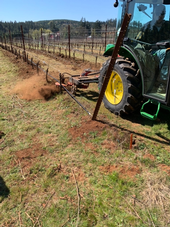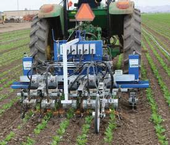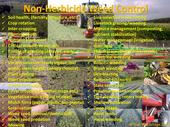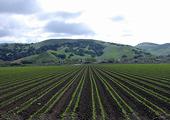- Author: Marcelo Moretti
- Author: David King
- Posted by: Gale Perez

From the Weeders of the West blog • 07/14/2021
Mechanical Weed Control under the Vine
Vineyard floor management can be divided into two areas, the area under the vine and the area between the rows. Cover crops are often planted between the rows and mowed as needed during the season. Under the grapevines, a two- to four-foot strip is kept weed-free with herbicide applications. The most widely used...
- Posted by: Gale Perez

Here's something from the Aquatic Plant Management Society blog :: posted Feb. 2017
(Original source: East County Today)
DBW Begins Herbicide Treatment in the Delta for Water Hyacinth and Egeria...
- Author: Richard Smith

Richard Smith, Farm Advisor and Tricia Love, Research Assistant
University of California Cooperative Extension Monterey County
SUMMARY
The current automated weeding machines use cameras to detect plants, and a computer algorithm to process the image, calculate which plants to keep/remove, and activate a kill mechanism. These machines are capable of cultivating within the seedline and removing weeds that would otherwise be left by traditional cultivation. The machines used in these studies included the Robovator, F Poulsen Engineering Aps, Hvalsø, Denmark and Steketee IC Weeder, the Netherlands. Both of these machines use a split knife that as it...
- Author: Lynn M. Sosnoskie

Spray and pray? Squirt and look? Burn baby burn?
Besides the Beavis and Butthead laughs (Heh. Heh-heh. Heh) that usually come when you tell someone you are a weed scientist, is the expectation that you advocate for the use of herbicides as the sole weed management strategy in any given system. I do evaluate chemical weed control (I won't deny it) and, surely, there are those who like to engage in recreational herbicide applications on the weekends; however, weed science is a very varied discipline with investigators that study weed biology and ecology, weed evolution, and weed suppression using biological, cultural, and physical tools.
I was very happy to see the following image (Figure 1)...
- Re-posted by: Gale Perez

From the UC Davis News Service • January 21, 2015
Led by Professor David Slaughter of the UC Davis Department of Biological and Agricultural Engineering, the project recently received a $2.7 million grant from the U.S. Department of Agriculture...


